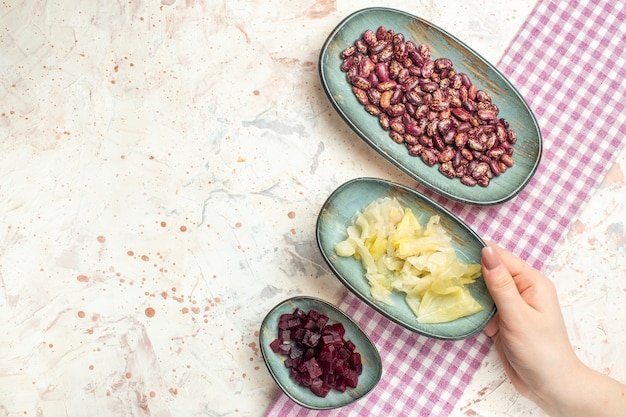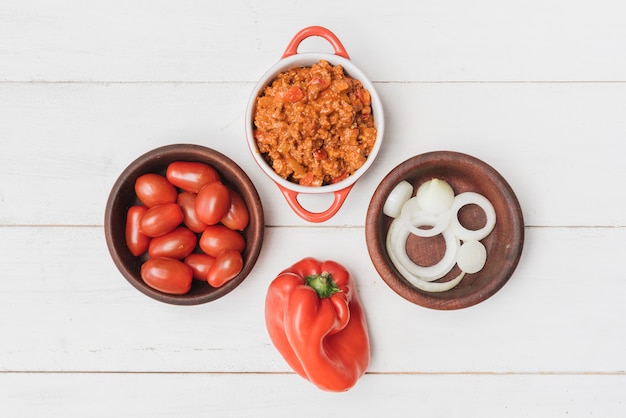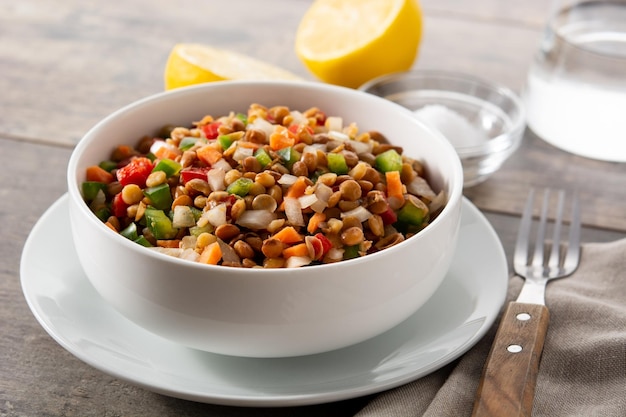Let's be honest, kidney beans are a kitchen hero. Those little red gems are packed with flavour and goodness, and they’re so versatile they can be the star of everything from hearty stews to light salads. But what if you want to go beyond the canned variety and experience the pure, unadulterated taste of freshly cooked kidney beans? Well, buckle up, because I'm about to take you on a culinary journey, from the humble raw bean to a deliciously satisfying meal.
Part 1: The Mighty Kidney Bean

A Humble History
Believe it or not, these humble beans have a long and fascinating history. They were first cultivated in the Americas, and were a crucial part of Indigenous diets for centuries. They’ve travelled the world, and are now enjoyed by millions as a source of affordable and healthy nutrition.
A nutritional powerhouse
We all know those beans are good for us, but let's dive into just how good. Kidney beans are a powerhouse of protein, fiber, and iron – all the essential nutrients for a healthy and energetic lifestyle. They’re also a fantastic source of folate, potassium, and magnesium, which play crucial roles in everything from blood cell formation to muscle function.
Part 2: Getting Started: Choosing Your Beans

Bean Selection: A Connoisseur's Guide
Not all beans are created equal! When choosing your beans, look for those that are firm, plump, and free of any blemishes. You want beans that are fresh and vibrant, the kind that just scream "delicious!" The best place to buy them? Local markets and specialist shops tend to have a wider selection of high-quality beans.
Storing Your Bean Treasures
Once you have your perfect beans, you need to treat them right. Store them in an airtight container, away from direct sunlight and heat. This ensures they remain fresh and ready for their culinary transformation.
Part 3: The Soaking Ritual: Essential for Tender Beans

This is the magic trick that transforms a hard, raw bean into a soft, delectable ingredient. Soaking not only speeds up cooking time, but also removes those pesky oligosaccharides, which can be responsible for digestive discomfort in some people. It's a simple step, but a vital one.
The Soaking Technique: A Step-by-Step Guide
Here’s how I do it: find a large bowl, add your beans, then cover them with plenty of fresh, cold water. Let them soak overnight, or at least eight hours. I personally prefer to soak them for longer, as it leads to the most tender and flavorful results.
Part 4: Drain and Rinse: Preparing for the Big Cook
After their luxurious soak, it’s time to get those beans ready for their cooking debut. Drain them thoroughly in a colander, giving them a good rinse under cold running water. This removes any remaining debris and ensures they’re ready for the next stage.
Part 5: The Simmer: Where the Magic Happens
Now we’re getting to the heart of the matter. Grab a large pot with a snug-fitting lid. We’re going for a slow, gentle simmer, allowing the beans to soften and absorb all those delicious flavours.
The Simmering Technique: A Patient Approach
Add the drained beans to the pot, then cover them with fresh water – about two inches above the beans. Add a pinch of salt, just enough to enhance the natural flavors. Bring the water to a boil, then reduce the heat to a low simmer. Here’s where patience is key. Simmer for 1-2 hours, or until the beans are tender and easily mashed with a fork. The key is to cook them until they are soft and almost melt in your mouth.
Don't Stir the Beans
Here's a tip that makes all the difference: resist the urge to stir the beans while they're simmering. Stirring can cause them to break apart, and we want them to stay nice and whole for the best results.
Part 6: The Finishing Touches: Flavor Boosters
Your beans are cooked to perfection, but now it’s time to elevate those flavours to new heights. This is where your creativity comes in.
Spice It Up: A Flavorful Symphony
I always add a bay leaf, a couple of cloves of garlic, and a few black peppercorns to my simmering beans. They add a warm depth of flavour that transforms the dish. But don't be afraid to experiment. A pinch of cumin, a dash of chili powder, or even some chopped onions and carrots can create a unique flavor profile.
Broth: The Secret Weapon
After adding your flavor boosters, simmer the beans for another 15 minutes. This allows the flavors to meld and create a symphony of taste. Don't discard the broth! It’s a delicious and flavourful liquid that can be used in soups, stews, or even as a drizzle over your beans.
Part 7: Beyond the Basic: Creative Ways to Use Kidney Beans
The beauty of kidney beans lies in their versatility. They can be the star of the show in countless dishes, and are always a welcome addition to your culinary repertoire.
Beans on Toast: A Comforting Classic
It’s a classic for a reason. Simply mash your cooked beans, spread them on some toasted bread, and top with a sprinkle of cheese. Add a dollop of ketchup for a touch of tangy sweetness.
Hearty Chili: A Spicy Delight
Kidney beans are the heart and soul of chili. Add them to your favourite recipe or create your own masterpiece. I love to add cumin, chili powder, and paprika for a smoky, spicy kick. Chopped onions and peppers add a vibrant burst of flavor and texture.
Spicy bean salad: A Refreshing Treat
A perfect light lunch or side dish. Combine your cooked kidney beans with chopped tomatoes, cucumber, red onion, and fresh herbs. Drizzle with a tangy dressing made from olive oil, lemon juice, and a pinch of salt and pepper.
Soup Sensation: A Warm Embrace
Kidney beans add a creamy texture and a boost of protein to any soup. Try them in a tomato soup, lentil soup, or even a hearty vegetable soup.
Part 8: Storing Your Culinary Creation
You've put in the effort, now it’s time to keep your beans fresh and delicious. Store them in an airtight container in the refrigerator. They'll last for up to 5 days, but honestly, they're so good, they probably won't last that long!
Part 9: FAQs – Solving Your Bean Queries
1. Can I cook kidney beans without soaking them?
Technically yes, but it will take longer. The cooking time will be about double. Soaking is highly recommended, especially if you're short on time.
2. What if my beans are still hard after cooking?
If your beans are still hard, they need to cook for a bit longer. Add some more water and keep simmering until they're tender.
3. Can I freeze cooked kidney beans?
Absolutely! Freeze them for up to 3 months. Just make sure they’re cooled completely before freezing. To prevent them from drying out, add some of the cooking liquid to the container. You can use them directly from frozen, but defrosting them overnight in the fridge gives them the best texture.
4. What if I overcooked my beans?
Overcooked beans can become mushy, but don’t fret! You can still use them. Blend them into a delicious dip, add them to a soup, or use them in a dish where the texture is less important.
5. What’s the best way to add flavour to kidney beans?
This is where your creativity comes into play. Add herbs and spices, chopped vegetables, or even a different broth or stock for a flavor boost. Experiment and find your favourite combination.
Part 10: Beyond the Kitchen: Kidney Beans in Other Cultures
Kidney beans have travelled the world and become a culinary staple in countless cultures. They’re a vibrant part of Mexican cuisine, starring in dishes like chili con carne and refried beans. In Latin America, they are a key ingredient in hearty stews and soups.
A Culinary Journey
The beauty of cooking with kidney beans is that they can transport you to another place and time. Each dish is a reminder of the rich cultural diversity that surrounds us, and how food connects us through shared traditions and history.
Part 11: My Final Thoughts: A Bean-Lover's Perspective
So there you have it. My ultimate guide to cooking kidney beans, from soaking to simmering, and beyond. These beans are a versatile, affordable, and healthy ingredient that should be a part of everyone's kitchen repertoire.
The Joy of Cooking
For me, cooking with kidney beans is a satisfying and joyful experience. The aroma of simmering beans fills my kitchen with warmth, and I always feel a sense of accomplishment when I create a delicious meal from simple ingredients.
A Bean for Everyone
Whether you're a seasoned chef or a kitchen novice, I encourage you to give cooking with kidney beans a try. You might be surprised at just how delicious and versatile these little red gems can be.
Everyone is watching

Prime Rib Roast Cooking Time Chart: Per Pound Guide
Cooking TipsPrime rib roast. Just the name conjures images of lavish dinners, crackling fires, and hearty laughter. It’s ...

How Long to Bake Potatoes in the Oven (Perfect Every Time)
Cooking TipsBaked potatoes are a staple in my kitchen. They're incredibly versatile, delicious, and surprisingly easy to m...

Perfect Rice Every Time: The Ultimate Guide to Cooking Rice
Cooking TipsAs a self-proclaimed foodie, I've always been a bit obsessed with rice. It's the foundation of countless cuisi...

The Ultimate Guide to Cooking Asparagus: Tips, Techniques, and Recipes
Cooking TipsAsparagus. The mere mention of this spring delicacy conjures up images of vibrant green spears, crisp and burs...

Ultimate Guide to Cooking the Perfect Thanksgiving Turkey
Cooking TipsThanksgiving. Just the word conjures up images of overflowing tables laden with delicious food, the scent of r...
